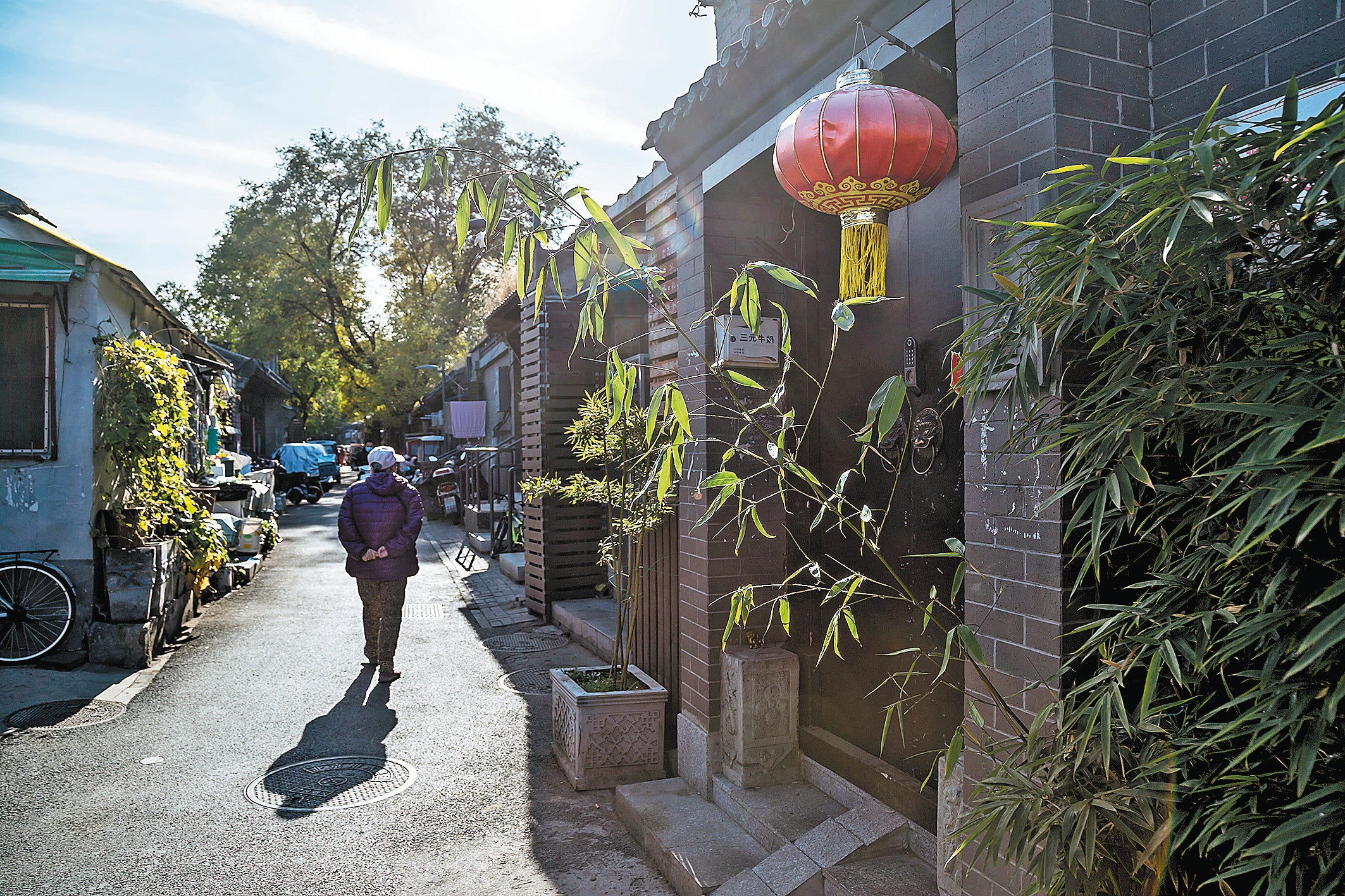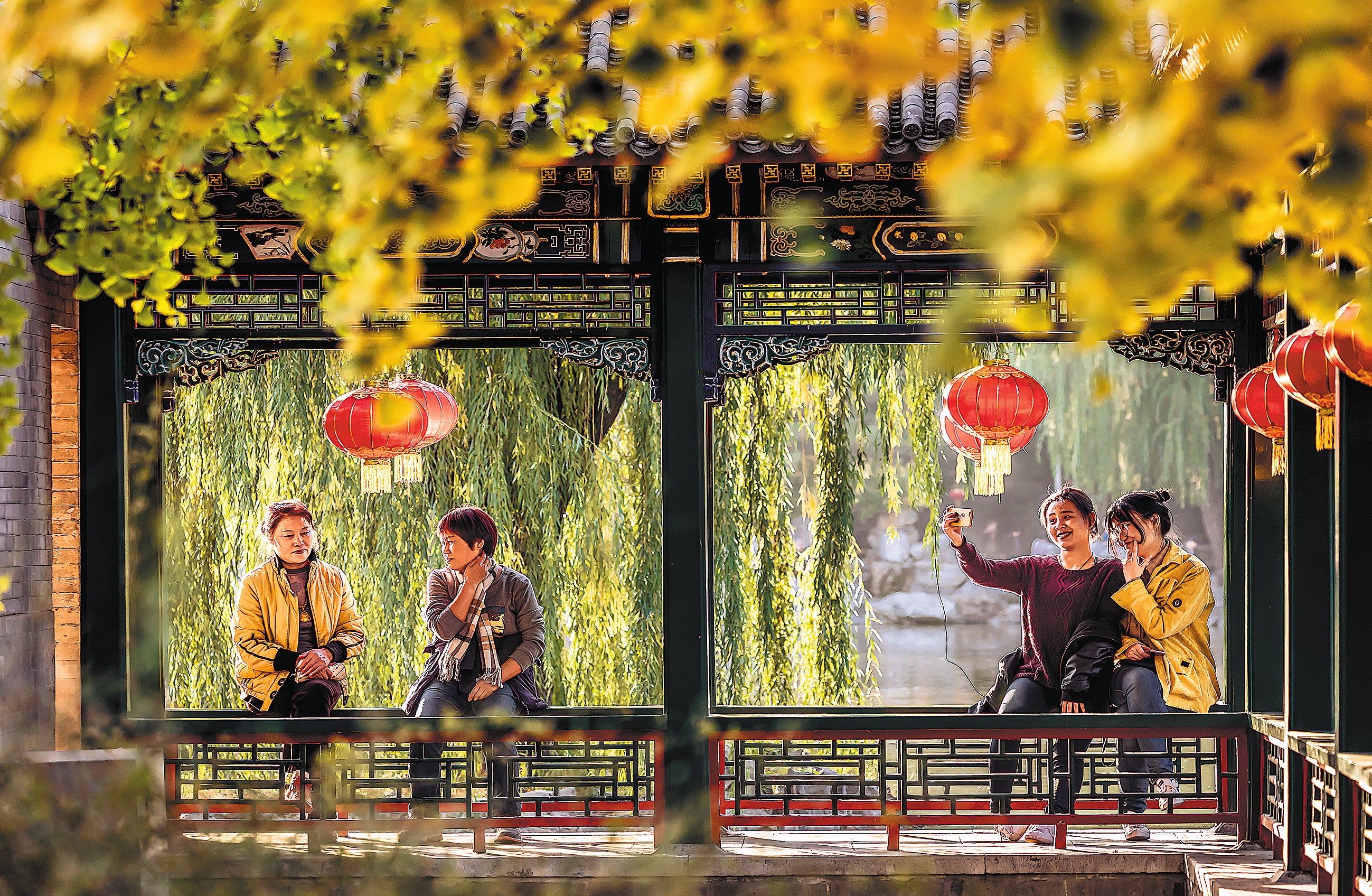Residents feel the benefits of hutong revamps
THE ARTICLES ON THESE PAGES ARE PRODUCED BY CHINA DAILY, WHICH TAKES SOLE RESPONSIBILITY FOR THE CONTENTS

The first thing that Wang Caili does immediately after she gets out of bed in the morning is to check the fish tank in the courtyard of her home.
“I recently installed the tank, which houses various kinds of goldfish,” said Wang, who has lived in Dongzhong hutong, or alleyway, in Beijing’s Xicheng district for more than three decades.
She also grows several plants in the small open space, including orchids and Monstera deliciosa, also known as the Swiss cheese plant, which adds to the courtyard’s beauty. “It is nice to wake up and see a small, delicate garden on your doorstep,” Wang said.
Her family shares the courtyard in a classic hutong property with three other households, who have praised Wang’s efforts to make the place more attractive.
Sitting in the courtyard, sipping tea and swapping stories about daily life have become an enjoyable routine for Wang’s family and their neighbours.
“I feel that in this way we have grown closer to one another,” said Wang, who owes her new relaxed lifestyle to significant changes that have taken place in the hutong neighbourhood, especially in recent years.
In the past, residents in the area faced a rising number of illegal constructions and related clutter that reduced their living space.
“In some places, two people were unable to pass at the same time, and it was difficult to move past bicycles in the courtyard,” Wang said.
In addition to overcrowding, residents faced many other problems. The ground became bumpy and particularly precarious for the elderly, while the drainage system was old and often became clogged, producing an unpleasant odour in summer.
However, life changed for the better at the start of last year, when the authorities in Xicheng launched a neighbourhood development programme.
Tan Daoliang, an official with the Xijiaominxiang community, which stretches for more than 3.7 miles and claims to be the longest hutong in the Chinese capital, said the programme was aimed at solving difficulties in urban management. It was also designed to establish model neighbourhoods to drive overall improvements in hutong throughout the district.
Local residents discussed related problems and decided on the renovation plan for public spaces in the courtyards, thus enhancing their participation, Tan added.
Urban planning experts and authorities at community and street level went door to door to seek public opinions before jointly coming up with the renovation plan. In Wang’s courtyard, makeshift coal sheds, kitchens and pigeon cages were removed after a series of consultations with all those involved.
“We once cleared away so much clutter in one day, that it needed to be transported by 60 sanitation trucks,” Tan said.
Ground and wall repairs, waterproofing work, and a lighting system upgrade were then carried out.
“We also tackled issues such as protecting old trees in the courtyards, rearranging electrical wiring, and revamping leaky roofs,” Tan said.
Wu Chen, chief architect at the Beijing Institute of Architectural Design, said that over the years, the preservation and enhancement of the city’s historical blocks have retained the layout and appearance of hutong and courtyards, the historical context of the ancient capital, neighbourhood bonds, and the way of life of old-generation Beijingers.

The courtyard has been a traditional part of local architecture throughout Beijing’s history, and an important part of traditional blocks in the city, added Wu, who has led a team involved in protecting and restoring such blocks for nearly two decades.
Wu said renovations are now aimed at bringing modern life to old hutong.
“In planning and design, it is important to strengthen protection of the authenticity and integrity of heritage, and highlight the rich values and connotations of the hutong,” Wu said.
Efforts have been made to preserve the original features of courtyards and hutong based on the study of maps from the Qing Dynasty (1644-1911), and to maintain their original scale, Wu added.

Bookmark popover
Removed from bookmarks